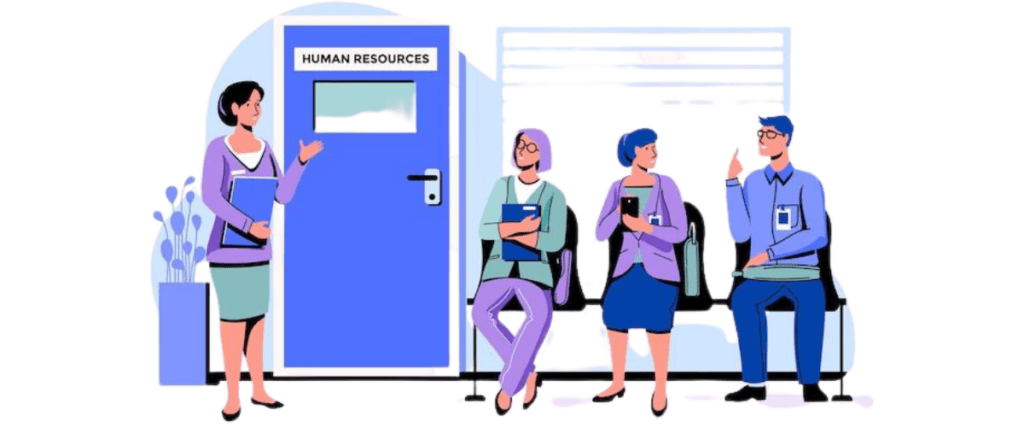One of the challenges is retaining employees, and organizations are still struggling to complete the necessary tasks. Stay interview is used by recruiters to retain employees and gain successful insights into how to retain them.
This article will explain what “stay interviews” are and how to incorporate them into an employee’s workday to improve retention.
What do you mean by stay interview?
A stay interview, retention interview, or stay conversation is a meeting between the recruiter and the current employee to get insights into their intentions.
He asks a set of predetermined questions to determine if the employee is willing to stay or not. He will determine the factors that will make an employee stay or the risks associated with leaving him.
To have the employee answer comfortably, you must build a healthy environment that will encourage the employee to answer the required questions.
What is the purpose of a stay interview?

The primary goal of “stay” interviews is to improve the relationship between management and employees. The managers can easily determine the at-risk employees and provide them with the appropriate resources so they will be able to retain them.
In the bigger picture, these questions help the managers determine what the employees value professionally and personally.
This will also provide management with context for developing better policies for employees. It also allows the employees to voice their opinions, which makes them feel valued.
Difference between a stay and an exit interview
Both types of interviews are used to increase employee retention and engagement, but for different reasons.
Exit interviews take place when the employee has already decided to leave the organization. It reflects the tenure of the employee, the growth he/she has achieved, and why they want to put an end to the employment. The employees share their opinions about the organization and whether they would recommend anyone to work there.
Stay interviews, on the other hand, are conducted during the employee’s active tenure. They are asked about what is going well in their work and what they want to improve. It helps you learn about your employees and what motivates them to stay in the organization.
How do you conduct stay interviews?
You must have a uniform procedure for your stay interviews; this will help you conduct the interviews more easily. Let us discuss how you can conduct exit interviews for your employees in an easier way.
1. You must know who to interview!
You cannot interview every employee; instead, you must determine who your high-risk and most-retained employees are before conducting stay interviews. This will help you determine the employee cycle in your organization and help you act accordingly.
2. Decide how often
You must decide how frequently these interviews should be conducted. You can decide this based on the employees’ requirements, but once a year is optimal.
3. Determine when to schedule interviews
You must determine when you have to schedule the demos. Do not schedule the demos near the annual report discussion, as this will defeat the purpose of the interviews. Instead, try to schedule the interview so it doesn’t affect any other process.
4. Designate an interviewer
You must decide who should interview your employees. The team managers should take the interview so they can easily evaluate and determine how the employee should be guided or what changes are required to make the tenure smoother.

5. Try to ease in the interview
Try to make the employee comfortable with the interview. Start by building a connection with general questions like “how was the day,” “what is the life update,” etc. When the employees sense they are being evaluated, they are less likely to open up.
6. Prepare the questionnaire
Prepare a set of uniform questions that you will be asking all of your employees while taking interviews. This will help you determine the common problems across departments. Ask follow-up questions to learn more about the employees so they can open up to you.
7. Listen actively
A good manager should be a good listener; it is important that he or she listens and understands all your requirements to give you the best solutions.
Make sure employees are at ease sharing their concerns with you and seeking solutions.
8. Summarize the conversation
When you are coming to the end of the conversation, make sure to summarize the conversation. Give them every reason why they saw room for improvement, and make sure the employee leaves the conversation with no hard feelings.
9. Follow up
Make sure you follow up after the meeting. You can send them an email to thank them for their time during the meeting. This will make them feel like their opinion matters.
10. Compile data
Now you must compile the data from all the questions asked and arrange them in the same place. You can share the insights with other team members too, so they will be able to understand the employee and act accordingly.
11. Take action
There is no point in asking all the questions if you will not act upon them. You must learn from the insights and improve the things that needed to be done.
How should you plan your stay for the interview?

There are many ways to determine the answers to your stay questions. It might not be always possible to schedule face-to-face interviews, especially when your HR department is understaffed.
You may ask all the questions in the form of a survey, which employees can answer at their convenience. Another way will be by building communities wherein the employees can organically discuss the issues.
But the best method is for a manager or anyone from management to take the interview so he/she can pass along the relevant feedback to the required team.
What are the best practices?
- Let the employees choose how they want to get interviewed as per their comfort level. It can be a telephone interview, face-to-face, or survey.
- Send the prior notice of what will be the discussion.
- Comfort the employees and convey that all of their concerns will be addressed.
- Avoid naming the meeting as a ‘stay interview’ to put an impression of introspection, put an impression of a regular healthy discussion.
- Make sure you have all the stay interview questions you want to ask. Noting them becomes easier for you to convey when the time comes.
Let’s wrap it up!
Make sure, after the interview, you act on the requirements of the employees. Make sure you collect the required insights and work on them to improve the work environment for the employees.
It is important that your employees feel heard and supported. It is also important to recognize their requirements before they realize they have to search for a new job.



